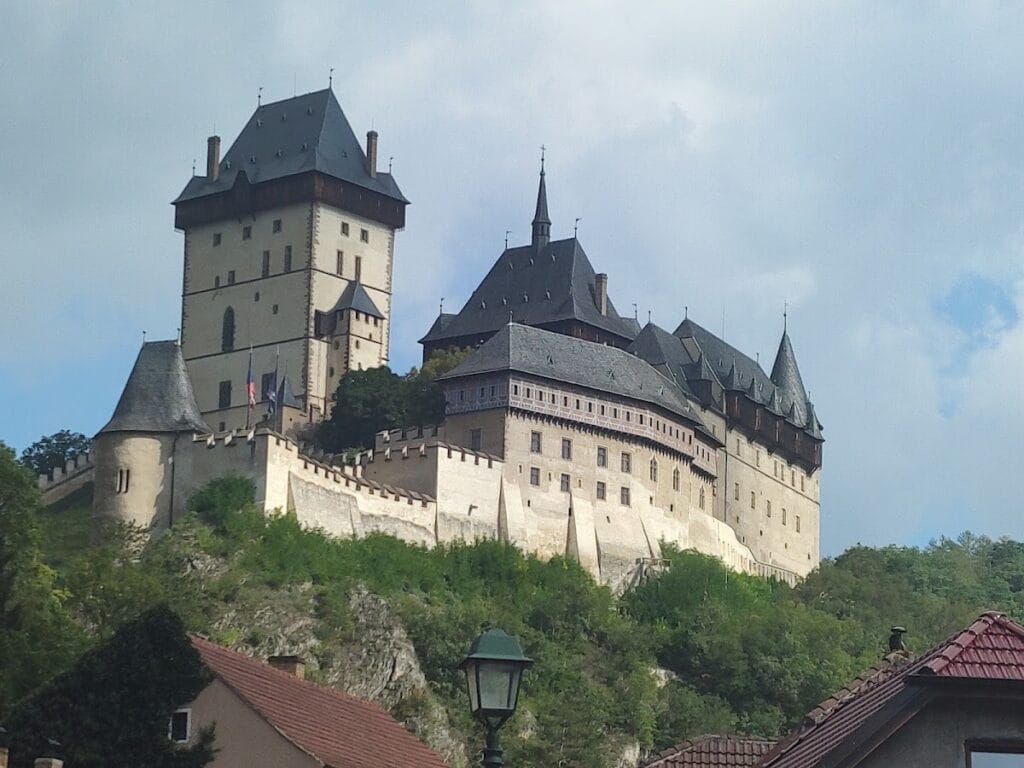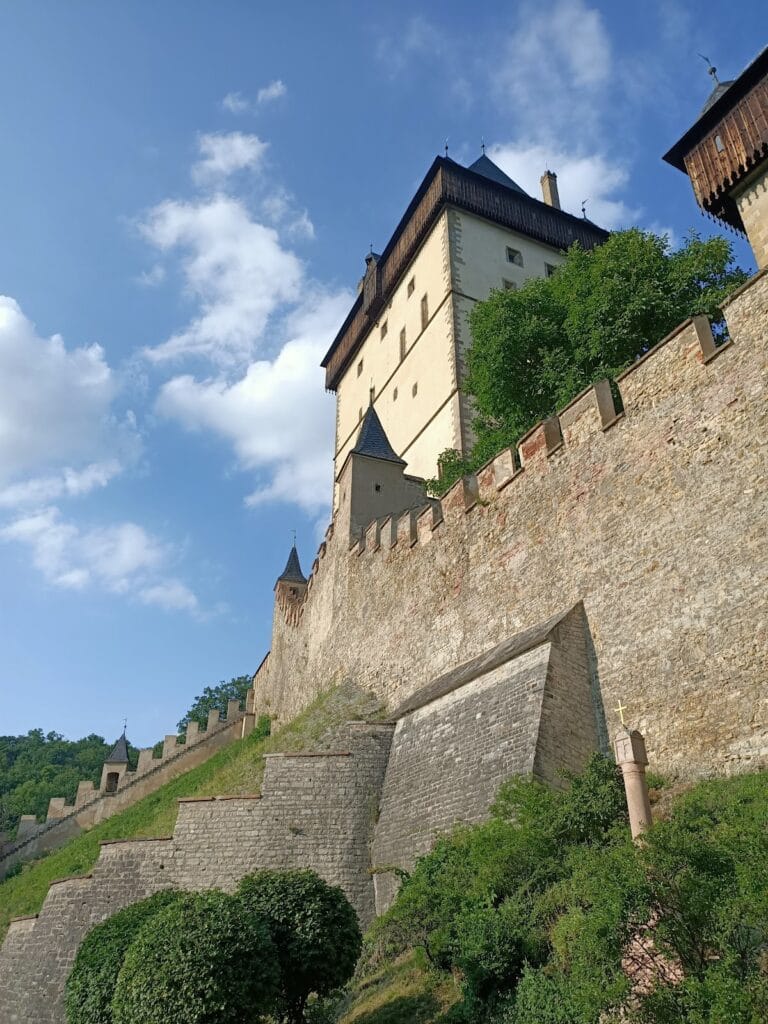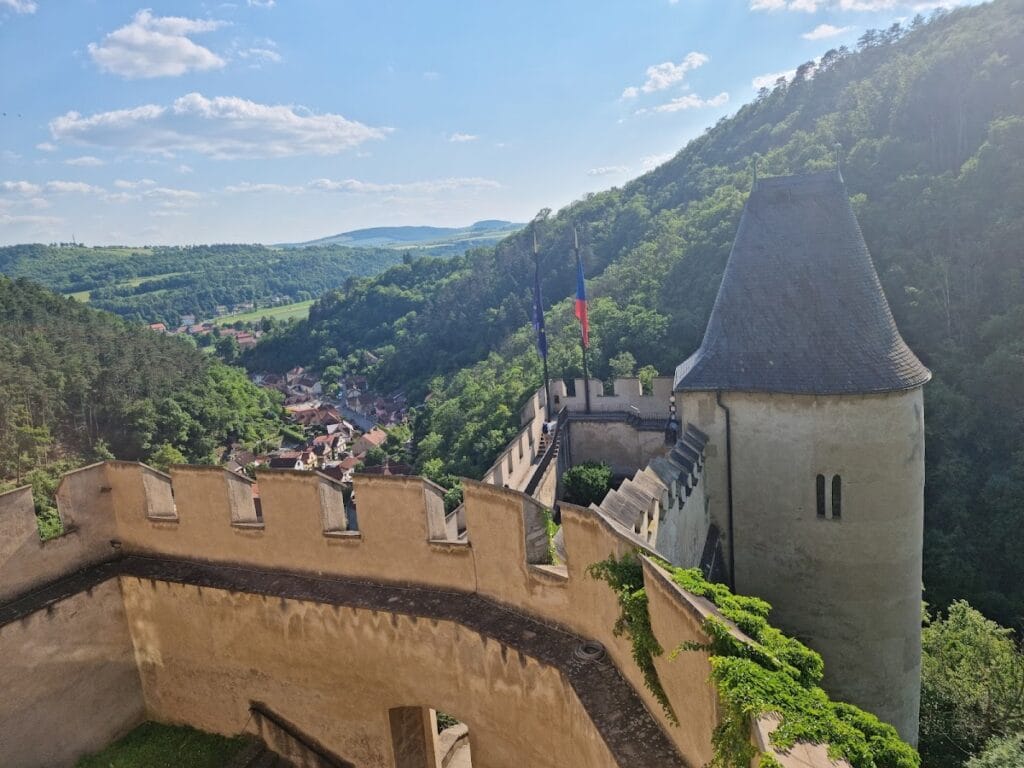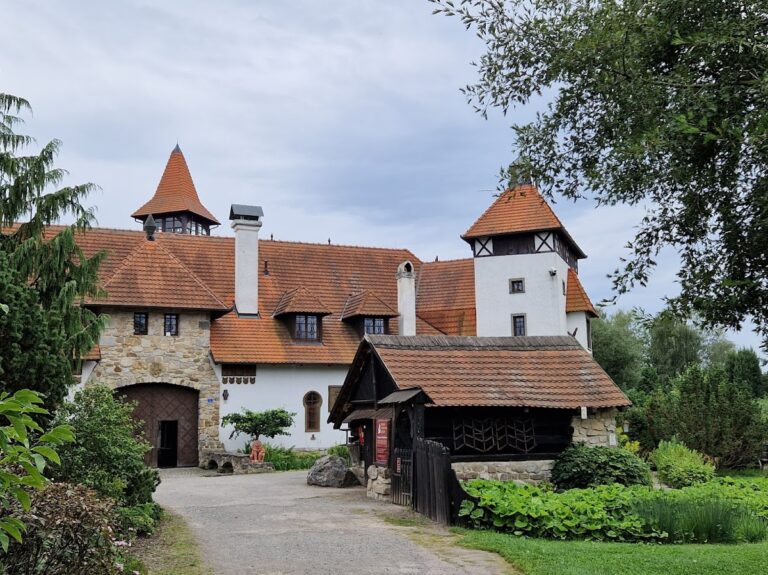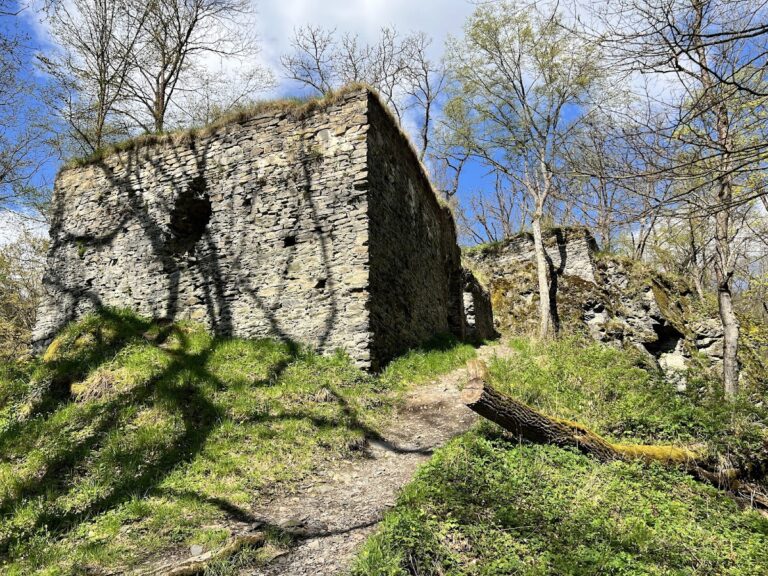Karlštejn Castle: A Gothic Fortress and Imperial Treasury in the Czech Republic
Visitor Information
Google Rating: 4.6
Popularity: Very High
Google Maps: View on Google Maps
Official Website: www.hrad-karlstejn.cz
Country: Czechia
Civilization: Medieval European
Remains: Military
History
Karlštejn Castle is located in the municipality of Karlštejn in the modern Czech Republic. It was built in the mid-14th century by the Bohemian ruler Charles IV, who was also Holy Roman Emperor. The castle was originally intended as a private royal residence and a secure place to hold important treasures, including imperial regalia and sacred relics.
Construction of the castle began around 1346–1348 under the personal supervision of Charles IV, involving notable architects such as Peter Parler and possibly Matthieu d’Arras. By 1365, the castle was consecrated and featured chapels dedicated to the Virgin Mary, St. Catherine, and the Holy Cross, reflecting its religious significance under Charles IV’s reign. Over time, Karlštejn came to serve as the main treasury for the imperial crown jewels and holy relics, emphasizing the ruler’s spiritual authority.
In the early 15th century, during the Hussite Wars, Karlštejn endured a siege in 1422 led by Sigismund Korybut. To protect the crown jewels, they were removed temporarily and later returned after the conflict. However, the imperial crown jewels themselves were eventually taken abroad and never restored to the castle.
The 16th century brought Renaissance influences and modifications to the castle, particularly to the Great Tower and Burgrave’s Court, as its defensive role lessened with evolving military technology. By the early 1600s, the crown jewels were permanently relocated to Prague Castle, marking a change in its function.
Ownership later transferred to Bohemian queens and subsequently to the Institute for Noble Maidens in Prague. During this period, Karlštejn experienced neglect and gradual decay. Restoration efforts began in the early 19th century following visits by Emperor Francis I, and were intensified in the late 19th century under Friedrich von Schmidt and Josef Mocker. Their restoration, conducted between 1887 and 1905, aimed to revive the castle’s Gothic character, although some additions from this phase were later debated for their historical accuracy.
The castle was opened to the public in 1905 and was officially recognized as a national cultural monument in the 1960s. Following further restoration work after the Second World War, including conservation of medieval artworks, the site has been preserved as an important cultural heritage location.
Remains
Karlštejn Castle stands as a Gothic stone fortress atop a limestone hill rising between 300 and 316 meters, overlooking the Berounka River valley. The complex is arranged on three terraces and consists of four main parts organized in a hierarchal layout: the Burgrave’s Court, the Imperial Palace, the Marian Tower, and the Great Tower. Each section grows in significance and elevation, with the Great Tower positioned at the highest point, serving as the spiritual core of the castle.
One remarkable feature is the Water Well Tower, which reaches depths of approximately 78 to 80 meters. This tower drew water from a nearby stream through a secret tunnel and raised it using a human-powered wheel system, an ingenious solution for ensuring supply within the fortress walls.
The Burgrave’s Court building seen today largely reflects 16th-century late Gothic construction, enhanced with neo-Gothic elements added during 19th-century restorations led by Josef Mocker. While much of the original 14th-century structure was replaced in these interventions, it currently serves administrative functions and houses a visitor center.
The Imperial Palace contains four floors with designated uses: the ground floor accommodated stables and storerooms; the first held grand halls such as the gilded carriage room; the second floor offered spaces for the emperor’s retinue, including noble and vassal halls; and the third featured the private apartments of the emperor, with amenities like a bedroom, fireplace, toilet, and a private chapel. Above these, the fourth floor comprised quarters for the empress, connected by a spiral staircase. Gothic wooden coffered ceilings and now-lost frescoes depicting the genealogy of the Luxembourg and Brabant families once adorned the palace interiors.
Adjacent to this is the Marian Tower, notable for its three-story height. It contains the Chapel of the Virgin Mary, whose biblical frescoes and depictions of relic veneration are attributed to Strasbourg artist Nikolaus Wurmser, active between 1357 and 1360. Nearby lies the Chapel of St. Catherine, used as a private oratory by Charles IV and decorated with pietra dura, a decorative inlay technique. This chapel features a double portrait of Charles IV and his third wife, Anna of Schweidnitz. The first floor of the Marian Tower historically functioned as a prison.
At the summit is the Great Tower, nearly 37 meters tall with walls measuring four to six meters in thickness. It connects to the Marian Tower by a covered wooden bridge. Inside, the Great Tower houses the Chapel of the Holy Cross, constructed between 1357 and 1365. This expansive space, roughly 25 by 17 meters, is richly adorned with gilding and decorated with 2,450 precious stones and Venetian glass stars that decorate the vaulted ceiling. The chapel contains 129 panel paintings by Master Theodoric and his workshop, portraying saints, martyrs, and rulers including Charlemagne and St. Wenceslaus. Access to this revered space was tightly controlled by four iron-clad doors secured by nine locks, with a dedicated garrison guarding the chapel. Its overall design evokes the concept of the Heavenly Jerusalem and was intended to house imperial regalia and holy relics.
Fortifications surrounding the castle include a ring wall with multiple towers and bastions. The main gate is defended by a cylindrical barbican tower, enhancing security. On the southern slope beneath the castle lie four vineyard terraces, which were likely established in the 19th century and have been considered for restoration and replanting in modern times.
The 19th-century restoration efforts by Friedrich von Schmidt and Josef Mocker sought to emphasize the Gothic character of Karlštejn. However, some additions, such as wooden galleries topping several towers, were later criticized for lacking historical authenticity. Notably, many original medieval elements such as frescoes, panel paintings, and key architectural features have been preserved or carefully restored using modern conservation techniques. This makes Karlštejn Castle a significant example of late medieval architecture and art in Central Europe.
